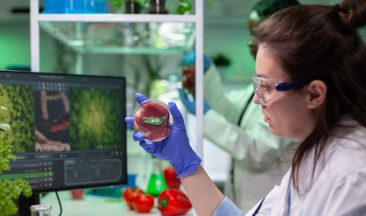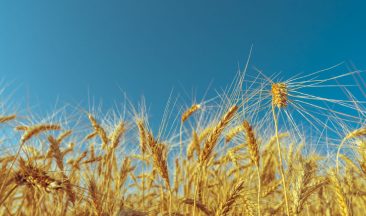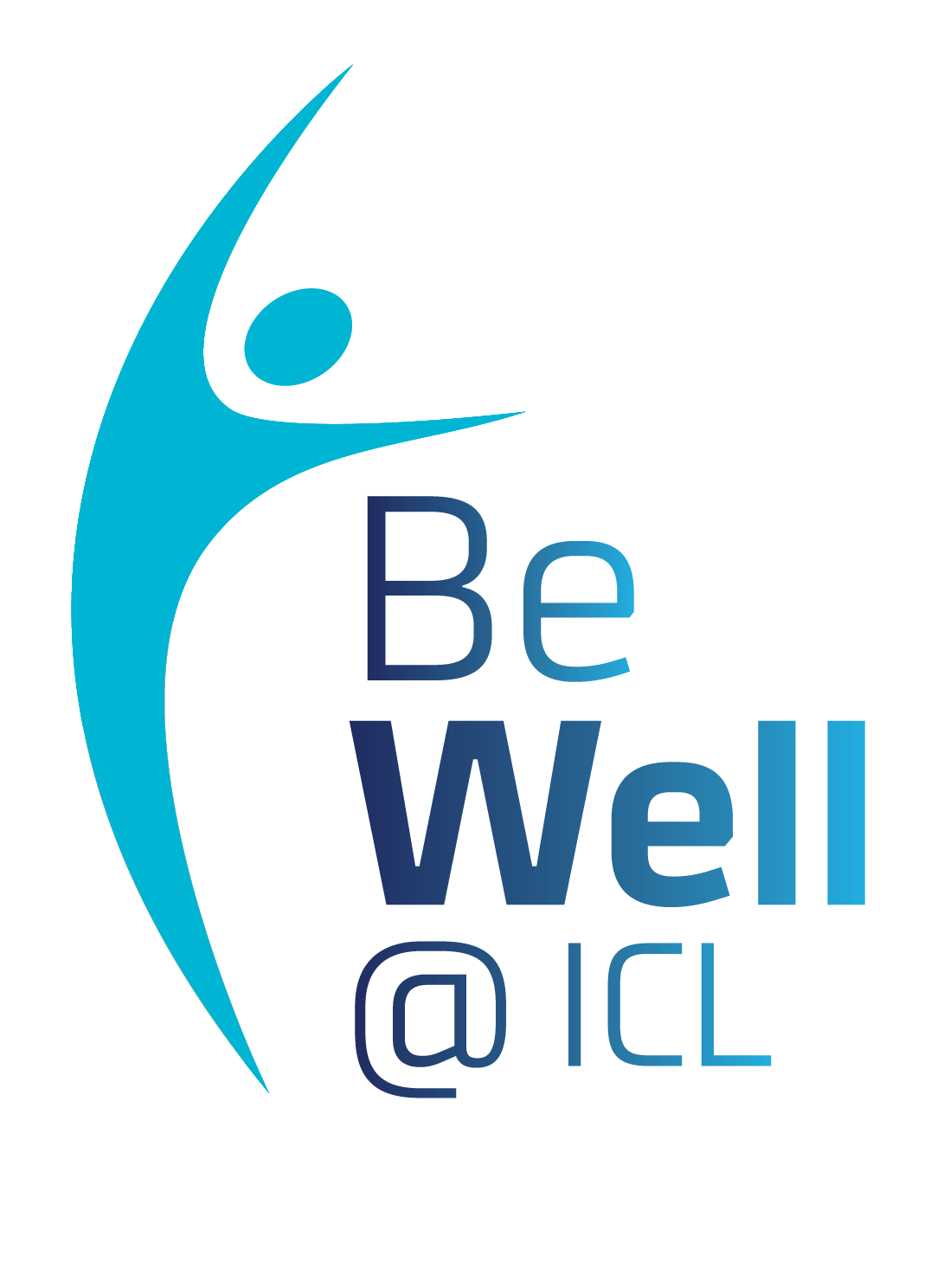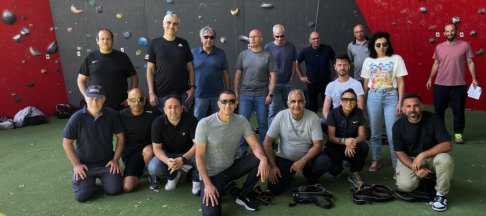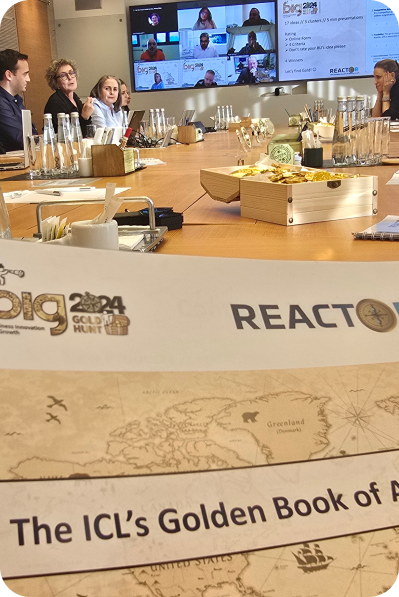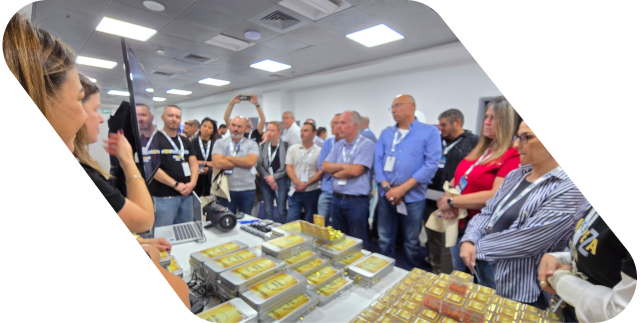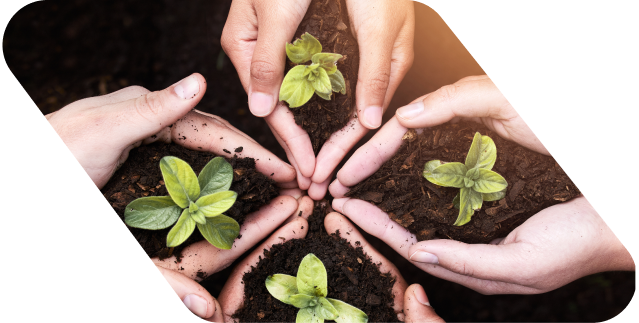In modern agriculture, the type of soil used for growing crops is not the only factor that determines the success of a farm. In fact, many farmers and growers are turning to alternative methods of growing, such as hydroponics, aquaponics, and container gardening. One important aspect of these methods is the growing media used, which serves as a substitute for traditional soil.
Soilless plant growing media is used in horticulture to nurture an ever-growing number of food crops. It’s become an important part of raising food in a sustainable manner, and demand for growing media is increasing rapidly. Interest in how food is grown and the impact of growing practices on the environment is also growing.
“As populations continue to grow and populations continue to urbanize and food product continues to be shifted more closely to those urban, then a lot of emphasis will be placed on growing media and how that’s placed into food production and food security,” said Dr. Brian Jackson, North Carolina State University researcher.
Another reason for the increase in demand for plant growing media is the role that growers and researchers have in combating climate change. One way in which growing media can contribute to this effort is by fulfilling three key objectives outlined in the United Nations climate change checklist.
First, it can help to establish sustainable food production and alleviate hunger, particularly in remote areas of the world where resources may be scarce. Container growing, in particular, has the potential to make a significant impact in this regard. Growing media can also help to reduce carbon inputs and the distance products are shipped. Finally, it can promote clean water and sanitation practices.
Despite the benefits that are so relevant to today’s challenges, soilless growing media isn’t a new invention. Soilless cultivation has a rich history that dates back to the mid-19th century. In 1860, two scientists named Knop and Sachs created the first standardized nutrient solution for plant growth by adding various inorganic salts to the water. At that time, scientists primarily used an aggregate medium to provide support and aeration to the root system, with quartz sand and gravel being the most popular choices.
However, the introduction of rock wool plates in the late 1960s by Scandinavian and Dutch greenhouse growers marked a significant breakthrough in soilless cultivation. This resulted in the widespread adoption of rock wool as a soil substitute for growing crops in many countries.
Today, soilless cultivation enthusiasts use a wide range of alternative porous materials as growing media, including organic media such as coconut coir, peat, and pine bark, as well as inorganic mediums like mineral wool, grow stone, perlite, and sand.
The long history of soilless growing media means there are deep roots from which to grow a fruitful and healthy industry. The demand for sustainable food production will continue to drive interest in soilless growing media, making a deep understanding of this topic critical for anyone invested in modern agriculture.
Factors to Consider in Choosing Growing Media
Growers have many options when it comes to growing media for a variety of container-grown plants. The properties of different types of growing media can help determine the best fit for a given application. These include physical, chemical, biological, and environmental properties and considerations.
Physical properties include bulk density, water-holding capacity, air-filled porosity, and media stability.
Bulk density refers to the mass per unit volume of a substrate and is important to consider since wet, dense potting mixes are heavier than wet light mixes.
Water-holding capacity is the proportion of a substrate’s pore space that remains filled with water after gravity drainage and is essential for plant growth.
Air-filled porosity is also critical, and the total volume of empty pores should ideally be in the range of 50 to 70 percent.
Lastly, media stability is important since a substrate that decomposes quickly can reduce substrate porosity, which is undesirable for plant growth.
Chemical properties include salinity and nutrient availability. Slightly acidic to neutral pH is desirable for the majority of plants as it ensures that nutrients are available to plant roots. A good cation-exchange capacity notes the ability to hold nutrients like calcium, magnesium, and potassium. These factors help ensure healthy plant growth.
While soilless media is generally considered to be free of harmful pests and diseases, it is still important to consider the presence of beneficial microorganisms as part of the media’s biological properties. These microorganisms, such as mycorrhizal fungi and beneficial bacteria, can help promote plant growth by aiding in nutrient uptake and protecting against harmful pathogens.
On the other hand, pests and diseases can quickly spread if not properly managed. This makes regular monitoring and management of the growing environment critical to ensure healthy plant growth in soilless media systems.
Lastly, environmental considerations may play a part in decisions about growing media in horticulture. Sustainability is a key factor to consider, as using renewable resources and minimizing waste can reduce the environmental impact of growing operations. Some traditional options such as peat-based are being challenged as are considered not renewable.
Other peat alternative growing media are considered sustainable and have a lower environmental impact. The availability and cost of soilless media can also be a consideration, as transportation and processing can increase the cost and carbon footprint of production. Overall, selecting soilless media that are sustainable, readily available, and cost-effective can help reduce the environmental impact of growing operations.

Different Types of Growing Media
Categories
Professional growing media and retail growing media serve different markets and have different requirements. Professional growers typically use larger quantities of growing media, so they require products that are consistent in quality and composition and are available in bulk.
The professional market also places greater emphasis on performance and efficiency and often requires growing media that are specialized for specific crops or growing conditions. In contrast, retail growing media is sold to consumers and is often packaged in smaller quantities.
These products are designed to be easy to use and provide satisfactory results for a wide range of plants. Retail growing media is also often marketed with an emphasis on features such as sustainability and eco-friendliness, which are important considerations for many consumers.
Soil-Based Growing Media
Soil-based growing media, as the name suggests, is composed of soil and various organic and inorganic amendments. The soil component typically consists of a mixture of topsoil, sand, and peat moss or compost. The organic amendments provide essential nutrients to plants, improve soil structure, and enhance water-holding capacity. Inorganic amendments such as perlite, vermiculite, and pumice are added to improve drainage and prevent compaction.
One of the major advantages of soil-based growing media is its nutrient-rich composition. Soil naturally contains a wide range of nutrients that are essential for plant growth, such as nitrogen, phosphorus, and potassium. The addition of organic amendments and fertilizers further enhances nutrient availability in the media. Soil-based media also has good water-holding capacity, which helps to prevent dehydration and nutrient leaching.
However, there are also some disadvantages to using soil-based growing media. One major concern is the potential for soil-borne diseases and pests. Soil can harbor harmful pathogens that can infect plants and cause significant damage. Additionally, soil-based media can become compacted over time, reducing air spaces and limiting root growth.
For producing plants in containers, field soils can be unsuitable because they do not have the necessary aeration, drainage, and water- capacity. Finally, soil-based media is relatively heavy, making it difficult to move and transport.
Soilless Growing Media
There are many different types of soilless growing media, each with its own unique characteristics, advantages, and disadvantages. Below are some key types of growing media for indoor and outdoor plants.
Coconut Fiber
Coco coir, or coconut fiber, is a low-cost, short-lifespan organic growing media comprised of shredded coconut husks. It’s typically seen in a compressed form and requires soaking before use. It holds water well and allows for good root aeration, but if not processed well, may contain high levels of salt and chloride that could damage the plants.
Perlite
Perlite is a lightweight and uniform silicious mineral of volcanic origin commonly used as an amendment in container media to increase aeration and drainage due to its lightness. However, it is prone to floating during irrigation and can be dusty when dry.
Peat Moss
Peat Moss is a common growing media made of partially decomposed marsh plants, including sedges, grasses, and mosses. Sphagnum peat moss, hypnum peat moss, and reed and sedge peat moss are three types of peat used in horticulture, with sphagnum being the most popular due to its high moisture-holding capacity and slow rate of decomposition.
Advantages of using peat include its ability to hold up to 20 times its weight in water, its acidic pH which is suitable for acid-loving plants, and its unique structure that can be graded at various sizes to suit different plant needs… Disadvantages include its tendency to harbor soil-borne diseases due to overwatering. In addition, its acidic pH which may not be suitable for all crops, and its unsustainable extraction process which harms peat bogs.
Rockwool
Rockwool, a type of mineral wool, is a growing media made primarily of heated and melted granite or limestone that is spun into threads and shaped into blocks or slabs. It has a high water retention capacity and can be reused, but it’s not biodegradable and has a high pH.
Woodfiber
Woodfiber refers to non-specific mixes of wood. First introduced in the 1980s-1990s, it contains various wood species, ages, and parts of the trees that have undergone different mechanical and chemical manufacturing processes. While woodfiber can provide benefits such as porosity, water and nutrient holding capacity, and pH suitability for acid-loving plants, potential toxicity and lack of standardization remain concerns.
Composted and aged pine bark is a commonly used growing media.. It has a fibrous structure that holds nutrient solution and air well but may absorb water easily, leading to water-logged conditions.
Pine bark is also known to float and can pose problems in the ebb and flow systems. Its acidic pH may also be a disadvantage as a growing medium for some crops. However, used bark can be recycled as mulch, making it a naturally biodegradable material.
Fibagro Advance
Fibagro Advance is a new woodfiber substrate from ICL, a micronutrient fertilizers manufacturer. It’s designed for peat-free or peat-reduced growing media. It is sustainably sourced, manufactured in the UK, and has been trialed specifically for quality and performance. The substrate has medium-low to medium density and is available with full ICL nutrition and wetting agent packages. It has been thermo-mechanically processed to ensure consistency.
One of the key characteristics of Fibagro Advance is its air-filled porosity, which facilitates good rooting, drainage, and ease of irrigation management. The substrate also has a high water-holding capacity, which ensures that plants have access to the moisture they need. In addition, Fibagro Advance has a high CEC, which means that it has the ability to retain nutrients and release them slowly to plants over time.
Fibagro Advance has been developed to overcome typical woodfiber challenges, such as slumping, water retention, nitrogen drawdown, and buffering capacity. ICL has tackled these challenges through its unique thermo-mechanical process, which produces ‘split end’ fibers that create a unique matrix when blended with raw materials such as peat, coir, and bark. The substrate has a good balance between AFP and WHC, which helps to reduce slumping and facilitate good rooting.
To further enhance growth and quality, Fibagro Advance can be used with biostimulants for plants and technically advanced fertilizers like Osmocote 5 controlled release fertilizer and other specially formulated fertilizers and wetting agents. This significantly reduces the impact of the issues associated with woodfiber substrates and helps to maximize plant quality.
Fibagro Advance is an innovative substrate that has been specifically designed to meet the needs of modern horticulture. It offers a sustainable, consistent, and high-performing alternative to traditional growing media, and it is a great choice for growers who are looking to reduce their environmental impact while still achieving excellent plant growth and quality.
Conclusion
ICL, a sustainable fertilizer supplier, is proud to offer the best agtech solutions to growers around the world. ICL knows the importance of selecting the right growing media for your operation. There are a lot of choices when it comes to growing media and many considerations that impact this all-important decision.
With advanced technology put to work in solutions like Fibagro Advance, ICL makes the decision easy. Fibagro Advance supports sustainable growing with a consistent, high-quality plant growing media to support feeding a growing world and addressing a climate in crisis.


